PKMYT1
-
Official Full Name
protein kinase, membrane associated tyrosine/threonine 1 -
Overview
The protein encoded by this gene is a member of the serine/threonine protein kinase family. This kinase preferentially phosphorylates and inactivates cell division cycle 2 protein (CDC2), and thus negatively regulates cell cycle G2/M transition. This kinase is associated with the membrane throughout the cell cycle. Its activity is highly regulated during the cell cycle. Protein kinases AKT1/PKB and PLK (Polo-like kinase) have been shown to phosphorylate and regulate the activity of this kinase. Alternatively spliced transcript variants encoding distinct isoforms have been reported. -
Synonyms
PKMYT1;protein kinase, membrane associated tyrosine/threonine 1;membrane-associated tyrosine- and threonine-specific cdc2-inhibitory kinase;membrane associated tyrosine and threonine specific cdc2 inhibitory kinase;MYT1;myt1 kinase;FLJ20093;DKFZp5
Recombinant Proteins
- Mouse
- Zebrafish
- Human
- Mammalian Cells
- Sf9 Cells
- HEK293
- Insect Cells
- Sf21 Cells
- His
- GST
- Non
- Avi
- Fc
- DDK
- Myc
- Flag
Background
What is PKMYT1 Protein?
PKMYT1, also known as MYT1, is a type of protein kinase that falls under the WEE kinase family. It plays a crucial role primarily during the G2/M transition of the cell cycle. Essentially, it works by phosphorylating and inactivating cyclin-dependent kinase 1 (CDK1), acting as a brake on the cell cycle to manage mitosis. The activity of PKMYT1 is influenced by polo-like kinase 1, and its gene can produce multiple variants due to alternative splicing. PKMYT1 is essential for maintaining normal DNA replication and cell cycle regulation, particularly in healthy eukaryotic cells. Interestingly, heightened levels of PKMYT1 have been noted in various cancers, including ovarian, breast, kidney, prostate, and bladder cancers, making it a promising potential target for cancer therapy.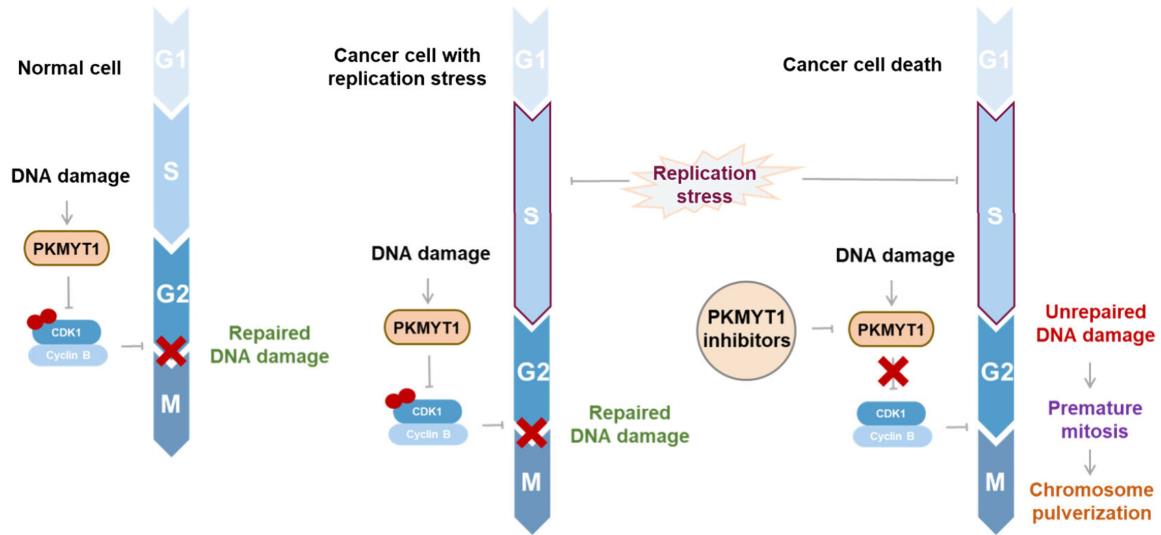
Fig1. Role played by PKMYT1 and PKMYT1 inhibitors in the cell cycle. (Ming Yang, 2024)
What is the Function of PKMYT1 Protein?
PKMYT1, also known as MYT1, is a member of the WEE kinase family and plays a key role in cell cycle regulation, particularly during the G2/M transition. It works by phosphorylating and deactivating CDK1, a process critical for keeping cell division in check and ensuring the normal replication of DNA in non-cancerous cells. By managing this phosphorylation activity, PKMYT1 keeps the CDK1-cyclinB complex anchored in the cytoplasm, preventing it from entering the nucleus and altering cell cycle progression. Moreover, PKMYT1 is involved in Golgi membrane reorganization and is regulated by the polo-like kinase 1. In cancer cells, PKMYT1 levels are often elevated, which might help the cells resist Wee1 inhibitors, making it a potential target in cancer treatment strategies. Its multifaceted role in cell cycle regulation and DNA replication stability makes it an important subject of research in understanding and combating cancer.PKMYT1 Related Signaling Pathway
PKMYT1 plays a significant role in various signaling pathways tied to cancer progression. In liver and colorectal cancers, PKMYT1 gets the β-catenin/TGF pathway going, helping the tumor invade and spread. For non-small cell lung cancer, it pushes the disease along by cutting down on NOTCH1, p21, and HES1 proteins, which affects the Notch pathway. Additionally, in esophageal squamous cell carcinoma, it ramps up cancer cell growth and movement via the AKT/mTOR axis. PKMYT1 also ties into the PI3K-Akt pathway, critical for controlling processes like cell proliferation and survival. It boosts cell cycle progression at the G2/M transition by inactivating Wee1 through Akt. Overexpression of PKMYT1 has been associated with worse outcomes and advancement in various cancers, such as stomach, lung, liver cancers, gliomas, neuroblastomas, and colorectal cancer. Thus, PKMYT1 plays a vital role in managing cell cycles, DNA damage responses, and tumor development, engaging major pathways like β-catenin/TGF, Notch, AKT/mTOR, and PI3K-Akt.PKMYT1 Related Diseases
PKMYT1 is closely tied to the development and progression of various cancers like ovarian, breast, kidney, prostate, and bladder cancers. Its high levels in these tumors make it a promising target for cancer treatment. Studies show that PKMYT1 is highly expressed in cancer cells from liver, lung, breast, and esophageal cancers, acting as an oncogene. This overexpression often indicates a poor prognosis and can actively drive tumor growth. Depending on the cancer type, PKMYT1 pushes disease progression by tweaking different signaling pathways: it fires up the β-catenin/TGF pathway in liver and colorectal cancers, boosting invasion and metastasis; influences the Notch pathway in non-small cell lung cancer; and activates the AKT/mTOR pathway in esophageal cancer. Overall, PKMYT1’s role across various cancers highlights its connection to the malignant behavior of tumors, marking it as a potential new target for future cancer therapies.Bioapplications of PKMYT1
Recombinant PKMYT1 protein is playing a big role in scientific research, industrial production, and medical studies. In the realm of scientific research, it’s used to dive into PKMYT1’s part in controlling the cell cycle and how tumor cells behave, especially focusing on the G2/M transition and CDK1 phosphorylation inhibition. On the industrial side, with its high expression in various cancers, recombinant PKMYT1 is key in crafting new cancer drugs and treatment strategies. In medical research, the recombinant form of PKMYT1 helps in spotting and validating tumor biomarkers, as well as in developing fresh diagnostic tools and therapies. All these applications not only deepen our understanding of PKMYT1’s role in cancer progression but also open up new pathways for cancer diagnosis, treatment, and prognosis assessment.Case Study
Case Study 1: Yang Yang, 2024
In tackling hepatocellular carcinoma, especially given its complex nature, hitting multiple pathways at once is key. But, no one’s really cracked the code on finding dual-target inhibitors for PKMYT1 and HDAC2 yet. That’s where virtual screening comes in. This method helped pinpoint a promising candidate, PKHD-5, which targets both PKMYT1 and HDAC2 effectively with nanomolar affinity. PKHD-5 holds its ground well with these targets, according to molecular dynamics. It’s got a seriously low IC50 against the HepG2/MDR cell line, suggesting it might beat drug resistance—and it doesn’t harm healthy liver cells much. Plus, it shows strong antitumor activity with minimal side effects.-
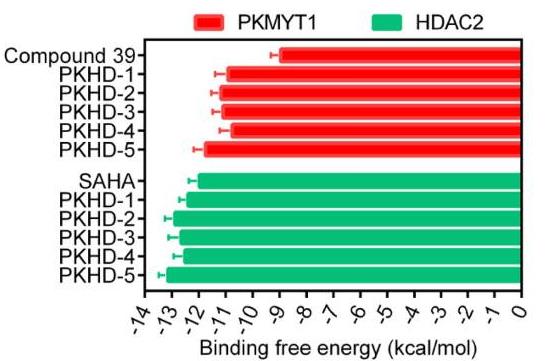 Fig1. Binding free energy between PKHDs 1-5 and PKMYT1 and HDAC2, respectively.
Fig1. Binding free energy between PKHDs 1-5 and PKMYT1 and HDAC2, respectively. -
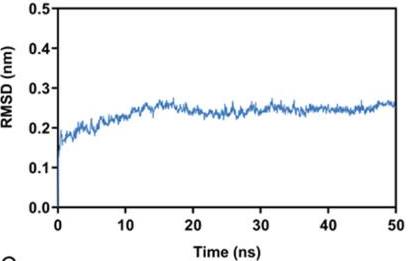 Fig2. RMSD analysis of the PKMYT1-PKHD-5 complex.
Fig2. RMSD analysis of the PKMYT1-PKHD-5 complex.
Case Study 2: Simin Wang, 2024
Pancreatic ductal adenocarcinoma (PDAC) is challenging, with a bleak 5-year survival rate below 12% due to limited effective treatments. New strategies are crucial. Recent CRISPR screenings spotlight PKMYT1 as a genetic weak spot in PDAC, without mutations involved. High levels of PKMYT1 hint at a poor outlook for these patients. Blocking PKMYT1 curtails tumor growth and spurs cell death in both lab dishes and living models. Drugs targeting PKMYT1 work in various PDAC models, slowing tumor growth without major side effects in both lab and patient-derived systems. PKMYT1 goes beyond its typical role of phosphorylating CDK1, acting like an oncogene by affecting PLK1 levels and activity. Finally, the roles of TP53 and PRKDC play into how sensitive these cancers are to PKMYT1-targeted treatments.-
 Fig3. CRISPR-mediated PKMYT1 knockout (sg2 and sg3) decreases PKMYT1 protein expression in four more cell lines.
Fig3. CRISPR-mediated PKMYT1 knockout (sg2 and sg3) decreases PKMYT1 protein expression in four more cell lines. -
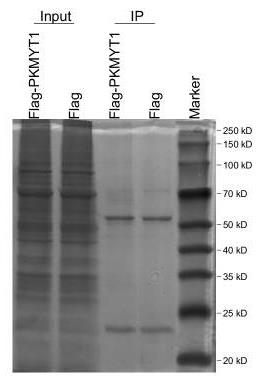 Fig4. Identification of PKMYT1-interacting proteins through co-immunoprecipitation followed by mass spectrometry-based proteomics analysis.
Fig4. Identification of PKMYT1-interacting proteins through co-immunoprecipitation followed by mass spectrometry-based proteomics analysis.
Quality Guarantee
High Purity
-
.jpg) Fig1. SDS-PAGE (PKMYT1-1695HF)
Fig1. SDS-PAGE (PKMYT1-1695HF)
High Bioactivity
-
.jpg) Fig2. Activity Data (PKMYT1-1695HF)
Fig2. Activity Data (PKMYT1-1695HF)
Involved Pathway
PKMYT1 involved in several pathways and played different roles in them. We selected most pathways PKMYT1 participated on our site, such as Cell cycle,Oocyte meiosis,Progesterone-mediated oocyte maturation, which may be useful for your reference. Also, other proteins which involved in the same pathway with PKMYT1 were listed below. Creative BioMart supplied nearly all the proteins listed, you can search them on our site.
| Pathway Name | Pathway Related Protein |
|---|---|
| Cell cycle | CEP78,UIMC1,NCAPD2,YWHAH,CDKN1C,E2F6,NCAPD3,SPC25,RAD21A,ORC4 |
| Oocyte meiosis | PPP2R5C,RPS6KA3,CPEB3,PPP1CBL,CPEB2,CUL1,PPP3CA,YWHABA,CALM2B,RPS6KA3B |
| Progesterone-mediated oocyte maturation | PPP1R2P9,PIK3R3A,HSP90AA1,MAPK11,PRKACBA,RPS6KA1,Adcy4,RPS6KA3B,AKT2L,MAP2K1 |
-
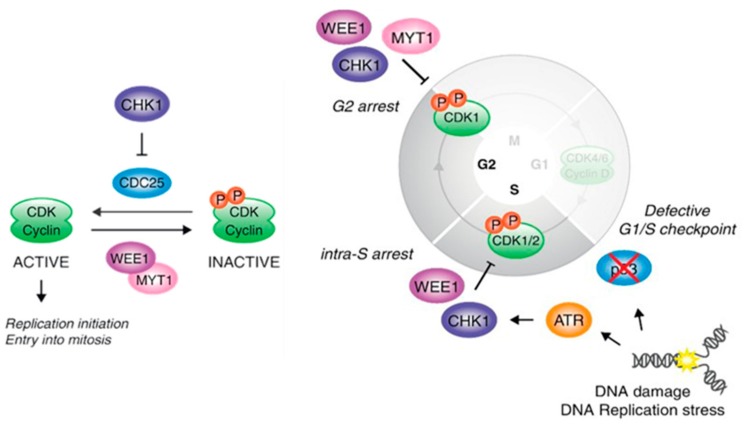 Fig1. Cell cycle control: DNA damage checkpoint. (Matthias Schmidt, 2017)
Fig1. Cell cycle control: DNA damage checkpoint. (Matthias Schmidt, 2017) -
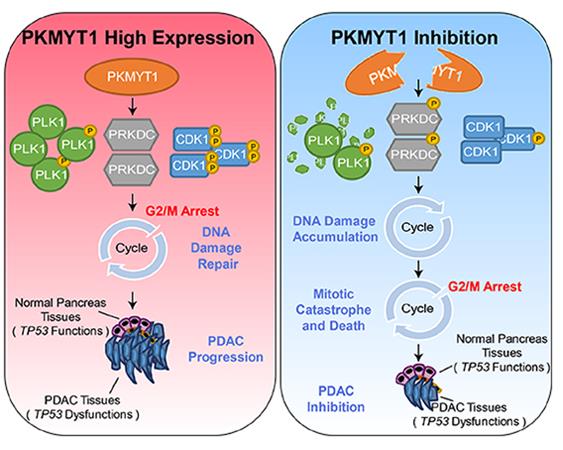 Fig2. Genome-wide CRISPR screens revealed PKMYT1 as a genetic vulnerability for PDAC. (Simin Wang, 2024)
Fig2. Genome-wide CRISPR screens revealed PKMYT1 as a genetic vulnerability for PDAC. (Simin Wang, 2024)
Protein Function
PKMYT1 has several biochemical functions, for example, ATP binding,kinase activity,metal ion binding. Some of the functions are cooperated with other proteins, some of the functions could acted by PKMYT1 itself. We selected most functions PKMYT1 had, and list some proteins which have the same functions with PKMYT1. You can find most of the proteins on our site.
| Function | Related Protein |
|---|---|
| protein serine/threonine kinase activity | NEK6,AKT3,TESK2,ADCK4,UHMK1,BMPR1A,PHKG1A,RIPK2,AKT1,MKNK1 |
| protein kinase activity | NRBP2,STK25B,PDGFRA,PAK2,CDK11B,MAP3K11,NEK1,EK1,NTRK3A,NTRK2B |
| kinase activity | TGFBR1A,PKM,PLAUB,MAPK12B,CAMK2G1,GM4922,STK30,SMG1,PLAUA,TNK2B |
| protein binding | ATP2B1,USF1,DBC1,MCC,SAV1,CDH2,UTF1,PSMB10,POLR1C,CDH15 |
| metal ion binding | GALNT7,ZFP36L1,ZFP768,TIPARP,PVALB8,MKRN4,TGFBR1B,CYP2K19,CYCS,ZNF501 |
| ATP binding | PAICS,DCLK1A,NLRP7,SMC3,MAP3K6,UBE2K,PAPSS2A,UBE2KB,NAIP1,PRKCH |
Interacting Protein
PKMYT1 has direct interactions with proteins and molecules. Those interactions were detected by several methods such as yeast two hybrid, co-IP, pull-down and so on. We selected proteins and molecules interacted with PKMYT1 here. Most of them are supplied by our site. Hope this information will be useful for your research of PKMYT1.
CCNB1;CDK1;Cdk1;PPP1CA;N/A;PLK1;linkable pd173955 analogue;bosutinib;imatinib;dasatinib;TGOLN2
Resources
Related Services
Related Products
References


